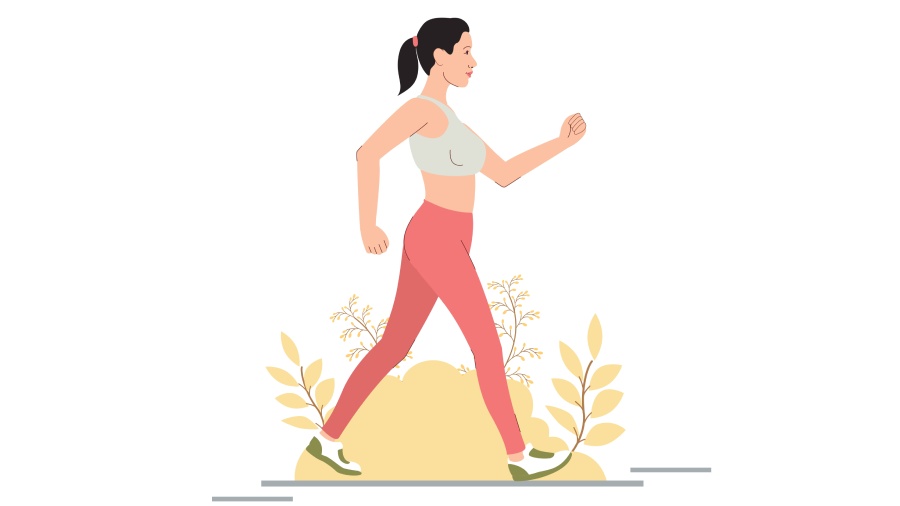There are all kinds of practical and impractical advice in the media and from doctors on how to live a long and healthy life. Two facts, however, are undisputed: body weight should be within ideal limits and some exercise needs to be done. But exactly how much exercise do you need?
For a long time, 10,000 steps a day was the gold standard. This works out to 4.5 kilometres with a normal stride. Step length is the distance between the heel strike of one foot and the heel strike of the opposite foot as you walk; stride length is the distance between the heel strike of the same foot. It varies with height. For a person who is 5 feet 3 inches (160 centimetres) tall, the average stride is 18 inches or 45 centimetres. It usually takes about an hour and 40 minutes to cover 4.5 kilometres. The good news is you don’t have to do it all in one shot, you can do it in spurts.
Just covering the required distance, however, does not translate into weight loss. For that, a calorie-restricted diet has to simultaneously be followed.
People who are time-constrained can do the bare minimum exercise required — about 20 minutes per day or 150 minutes a week. The first 20 minutes of any exercise offer the maximum benefits for longevity and health. After that, continued activity helps with strength, endurance and some weight loss. So after around a couple of minutes of stretching and slow walking to warm up, aerobic exercise with maximum effort should be done for 20 minutes.
Many people are limited by their environment. They might be living in the centre of a busy town; roads may have potholes, or there may be menacing stray dogs. In such cases, exercising on your terrace, balcony, or even in the hall is often perfectly feasible.
Attire should always be appropriate. Loose-fitting, sweat-wicking clothes are ideal. Otherwise, cotton salwar-kameez or leggings are appropriate for women. The sari is graceful, elegant and our national attire, but it does not allow free movement of the legs. Also, sweating makes it stick to the body. As a result, you might lose your balance.
Footwear is important, even for slow walking. Rubber-soled canvas shoes with or without laces are ideal. Unfortunately, feet tend to slip out of Hawaii slippers. Even with other slippers, the toes have to try and hold on to them. This can cause pain and result in a fall.
In diabetics, meals have to be eaten on time to manage sugar levels well. Sitting or lying down immediately after a meal will cause a spike in blood sugar. For sustained control, get into the habit of taking a 15-minute walk within 60-90 minutes after a meal. Even though 15 minutes is recommended, as little as 2-5 minutes can be beneficial. Even in people without diabetes, this habit can aid digestion and prevent acidity and flatulence.
If you cannot walk, at least stand after a meal. Standing consumes calories, strengthens the leg muscles and improves balance. In people with lifestyle diseases like diabetes, hypertension and a deranged lipid profile, just standing can prevent stasis of blood in the legs and clot formation. Standing for a total of two hours during the day should be sufficient.
Fitness and exercise can be incorporated into a normal day without too much time, effort or lifestyle adjustment. The rewards reaped from them are usually immeasurable.
The writer has a family practice at Vellore and is the author of Staying Healthy in Modern India. If you have any questions on health issues, please write to yourhealthgm@yahoo.co.in











